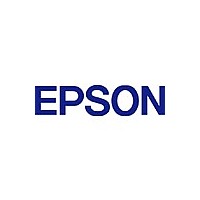S1D13705F00A200 Epson, S1D13705F00A200 Datasheet - Page 117

S1D13705F00A200
Manufacturer Part Number
S1D13705F00A200
Description
Manufacturer
Epson
Datasheet
1.S1D13705F00A200.pdf
(266 pages)
Specifications of S1D13705F00A200
Operating Supply Voltage (typ)
3.3/5V
Operating Temperature (min)
-40C
Operating Temperature (max)
85C
Operating Temperature Classification
Industrial
Package Type
TQFP
Pin Count
80
Mounting
Surface Mount
Operating Supply Voltage (min)
2.7V
Operating Supply Voltage (max)
5.5V
Lead Free Status / Rohs Status
Compliant
Available stocks
Company
Part Number
Manufacturer
Quantity
Price
Part Number:
S1D13705F00A200
Manufacturer:
EPSON/爱普生
Quantity:
20 000
- Current page: 117 of 266
- Download datasheet (3Mb)
9: HARDWARE ABSTRACTION LAYER (HAL)
9 H
9.1 Introduction
9.2 Contents of the HAL_STRUCT
9.3 Using the HAL library
2-32
The HAL is a processor independent programming library provided by Epson. The HAL was
developed to aid the implementation of internal test programs, and provides an easy, consistent
method of programming the S1D13705 on different processor platforms. The HAL also allows for
easier porting of programs between S1D1370x products. Integral to the HAL is an information
structure (HAL_STRUCT) that contains configuration data on clocks, display modes, and default
register values. This structure combined with the utility 1375CFG.EXE allows quick customization
of a program for a new target display or environment.
Using the HAL keeps sample code simpler, although some programmers may find the HAL
functions to be limited in their scope, and may wish to program the S1D13705 without using the
HAL.
The HAL_STRUCT below is contained in the file “hal.h” and is required to use the HAL library.
typedef struct tagHalStruct
{
} HAL_STRUCT;
Within the Regs array ia a structure which defines all the registers described in the S1D13705
Hardware Functional Specification , document number X27A-A-001-xx. Using the 1375CFG.EXE
utility you can adjust the content of the registers contained in HAL_STRUCT to allow for different
LCD panel timing values and other default settings used by the HAL. In the simplest case, the
program only calls a few basic HAL functions and the contents of the HAL_STRUCT are used to
setup the S1D13705 for operation.
To utilize the HAL library, the programmer must include two “.h” files in their code. “Hal.h”
contains the HAL library function prototypes and structure definitions, and “appcfg.h” contains the
instance of the HAL_STRUCT that is defined in “Hal.h” and configured by 1375CFG.EXE. For a
more thorough example of using the HAL see Section 10.1, “Sample code using the S1D13705
HAL API” on page 2-46.
Note: Many of the HAL library functions have pointers as parameters. The programmer should be
char
WORD
WORD
BYTE
DWORD dwClkI;
DWORD dwDispMem;
WORD
ARDWARE
aware that little validation of these pointers is performed, so it is up to the
programmer to ensure that they adhere to the interface and use valid pointers.
Programmers are recommended to use the highest warning levels of their compiler in
order to verify the parameter types.
szIdString[16];
wDetectEndian;
wSize;
Regs [MAX_REG + 1];
wFrameRate;
A
BSTRACTION
/* Input Clock Frequency (in kHz) */
/* Starting address of display buffer memory */
/* Desired panel frame rate */
EPSON
L
AYER
S1D13705F00A PROGRAMMING NOTES
AND EXAMPLES (X27A-G-002-01)
(HAL)
Related parts for S1D13705F00A200
Image
Part Number
Description
Manufacturer
Datasheet
Request
R

Part Number:
Description:
S1d13705 Embedded Memory Lcd Controller
Manufacturer:
Epson Electronics America, Inc.
Datasheet:

Part Number:
Description:
INK CARTRIDGE, T0803, EPSON, MAG
Manufacturer:
Epson
Datasheet:

Part Number:
Description:
INK CARTRIDGE, T0804, EPSON, YEL
Manufacturer:
Epson
Datasheet:

Part Number:
Description:
CXA1034M
Manufacturer:
EPSON Electronics
Datasheet:

Part Number:
Description:
Manufacturer:
EPSON Electronics
Datasheet:

Part Number:
Description:
Manufacturer:
EPSON Electronics
Datasheet:

Part Number:
Description:
Manufacturer:
EPSON Electronics
Datasheet:

Part Number:
Description:
Manufacturer:
EPSON Electronics
Datasheet:

Part Number:
Description:
RTC58321Real time clock module(4-bit I/O CONNECTION REAL TIME CLOCK MODULE)
Manufacturer:
EPSON Electronics
Datasheet:

Part Number:
Description:
SCI7661DC-DC Converter
Manufacturer:
EPSON Electronics
Datasheet:

Part Number:
Description:
Manufacturer:
EPSON Electronics
Datasheet:

Part Number:
Description:
Manufacturer:
EPSON Electronics
Datasheet:











